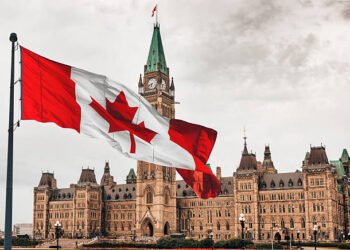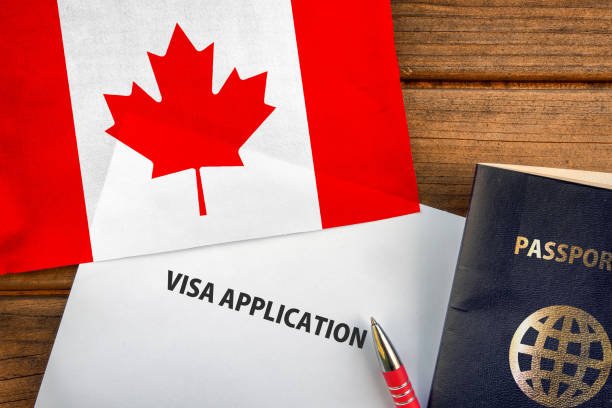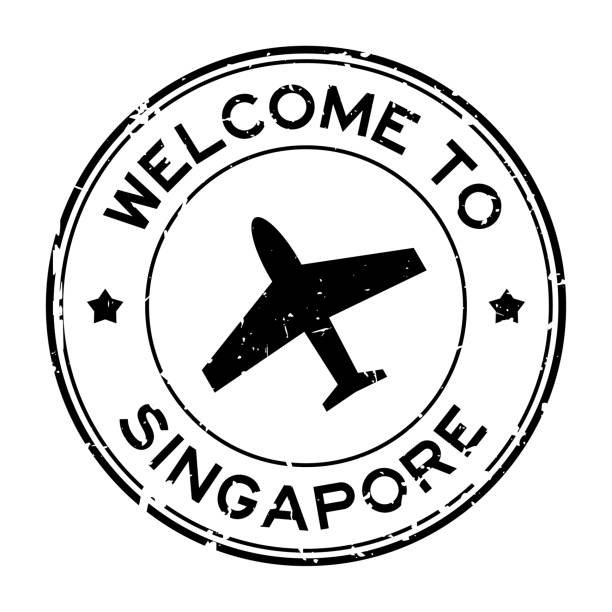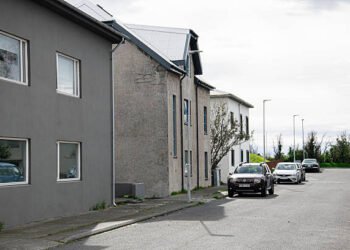Advertisement
Securing permanent residency has been considered one of the most important milestones for skilled workers seeking stability abroad. With PR status, skilled professionals have been given the right to live, work, and access social benefits without the limitations of a temporary visa. Many have used permanent residency as a steppingstone toward full citizenship, building careers and families in countries that welcome their expertise.
This guide has been designed to cover the most sought-after pathways to permanent residency for skilled workers. Each major immigration destination has been explored, along with eligibility criteria, application processes, and strategies for increasing approval chances.
Advertisement
Understanding Permanent Residency From The Scratch
What Permanent Residency Means
Permanent residency has been defined as the legal right to reside in a country indefinitely while retaining foreign citizenship. PR status has provided almost the same rights as a citizen, including the right to work, access public healthcare, and enroll children in public schools.
Citizenship has not been automatically granted with PR; instead, it has been seen as a future option after fulfilling residence and legal requirements. PR holders have often had to meet specific residency obligations to maintain their status.
Why PR Has Been Important for Skilled Workers
For skilled workers, permanent residency has been considered a pathway to security. Job mobility has been improved because PR holders have been free to switch employers without sponsorship concerns. Housing and credit opportunities have been more easily accessed, and children have been given better education options.
Furthermore, many countries have used PR as the first step toward citizenship. Skilled migrants who have met residency requirements have often been able to naturalize, gaining full rights such as voting and holding a passport of the country.
Global PR Opportunities for Skilled Workers
Top Countries Offering PR
Several countries have developed systems to attract global talent. The most popular have been:
- Canada, known for its Express Entry and Provincial Nominee Programs.
- Australia, offering multiple skilled migration visas under a points-based system.
- New Zealand, with its Skilled Migrant Category.
- United Kingdom, where Indefinite Leave to Remain (ILR) has been the PR equivalent.
- United States, which has provided a path to Green Cards through employment-based categories.
- Germany, offering the EU Blue Card leading to permanent settlement.
- UAE, introducing the Golden Visa for long-term residency.
Each of these destinations has attracted skilled workers through clear, structured programs and pathways.
Country-by-Country Permanent Residency Pathways
Canada: Express Entry and Provincial Nominee Programs
Canada’s immigration system has been globally recognized as one of the most transparent. The Express Entry system has been used to manage applications for three federal programs:
- Federal Skilled Worker Program (FSWP) – for skilled professionals with foreign work experience.
- Canadian Experience Class (CEC) – for those with work experience inside Canada.
- Federal Skilled Trades Program (FSTP) – for those in trade occupations.
Applicants have been ranked using the Comprehensive Ranking System (CRS), which has considered age, education, work experience, language proficiency, and other factors. Invitations to Apply (ITAs) have been issued to top-ranked candidates.
The Provincial Nominee Programs (PNPs) have been an additional pathway where provinces have nominated candidates with skills in demand locally. A provincial nomination has added 600 CRS points, nearly guaranteeing an invitation to apply for PR.
Australia: Skilled Migration Program
Australia’s system has been points-based, with skilled workers submitting an Expression of Interest (EOI) through SkillSelect. The main visas have included:
- Skilled Independent Visa (Subclass 189) – does not require sponsorship.
- Skilled Nominated Visa (Subclass 190) – requires state or territory nomination.
- Skilled Work Regional (Subclass 491) – for those willing to live in regional Australia.
Points have been awarded for age (maximum points for ages 25–32), qualifications, English ability, and work experience. Higher points have meant better chances of receiving an invitation.
New Zealand: Skilled Migrant Category
New Zealand has used a points-based system similar to Australia. Points have been awarded for skilled employment, qualifications, work experience, and age. A job offer in New Zealand has significantly increased the points total.
Applicants who have met the threshold have been invited to apply for PR. Those granted PR have been able to live, work, and study indefinitely in New Zealand and sponsor family members.
UK: Skilled Worker Visa to Indefinite Leave to Remain (ILR)
The UK has provided a route to permanent residency through the Skilled Worker Visa. Holders of this visa have been required to work for a licensed sponsor and earn at least the minimum salary threshold.
After five years of continuous residence, applicants have been allowed to apply for Indefinite Leave to Remain (ILR). ILR has granted the right to remain in the UK without time limits, work for any employer, and access public benefits.
USA: Employment-Based Green Card
The US has used the Employment-Based (EB) Green Card system. The main categories for skilled workers have been:
- EB-2 – for professionals with advanced degrees or exceptional ability.
- EB-3 – for skilled workers with at least two years of experience.
Employers have been required to complete the PERM Labor Certification process to prove no qualified US worker was available for the role. After approval, applicants have submitted Form I-140 and eventually adjusted status to permanent resident.
Germany: EU Blue Card to Permanent Settlement
Germany has offered the EU Blue Card to skilled professionals with university degrees and a job offer above a salary threshold. After 33 months (or 21 months with B1 German language skills), Blue Card holders have been able to apply for a Settlement Permit (permanent residency).
UAE: Golden Visa
The UAE has introduced a 10-year Golden Visa for professionals in fields such as medicine, science, and engineering. Holders of this visa have enjoyed long-term residency and the ability to sponsor family members without the need for local employer sponsorship.
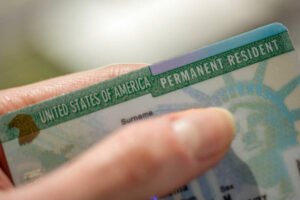
Key Requirements for PR Applications
Skills and Education
Applicants have been required to provide recognized qualifications. In Canada and Australia, credential assessments (ECA) have been mandatory to prove equivalence to local education standards.
Work Experience
Minimum years of skilled work experience have been demanded, often within a recognized occupation list. Proof has been required through reference letters, contracts, and pay slips.
Language Proficiency
Most countries have required language tests such as IELTS, CELPIP, or PTE. Higher scores have resulted in higher points, which have improved selection chances.
Financial and Health Requirements
Proof of funds has been required to show the ability to settle. Health examinations and police clearance certificates have been mandatory to confirm good health and character.
Step-by-Step Application Process
Research and Choose a Country
Careful research has been conducted to identify the most suitable country based on occupation demand, lifestyle preferences, and immigration rules.
Collect Documents
Passports, language test results, educational documents, work experience letters, and financial proofs have been gathered and organized.
Submit Expression of Interest or Application
Profiles have been created in systems such as Canada’s Express Entry or Australia’s SkillSelect. Scores have been calculated automatically.
Wait for Invitation
Top-ranking candidates have been issued Invitations to Apply (ITAs) or nominations.
Submit PR Application
Final applications have been submitted with biometrics, medicals, and supporting documents.
Receive PR Visa
Upon approval, PR visas have been issued. Applicants have then been able to travel to the destination country and complete any landing requirements.
Common Mistakes to Avoid
Missing Deadlines
Many applications have been refused simply because deadlines for submitting documents or responding to invitations have been missed.
Incorrect Documentation
Unverified job letters, mismatched employment dates, or incomplete forms have led to refusals.
Low Language Scores
Language proficiency has played a big role in points-based systems. Retaking exams to improve scores has often been necessary.
Tips to Increase Chances of PR Approval
Improve Points or CRS Score
Applicants have been advised to increase their scores by gaining more work experience, improving language scores, or obtaining a provincial nomination.
Use Professional Help
Immigration lawyers or consultants have been hired to review documents and prepare applications correctly.
Build Strong Profiles
Applicants have been encouraged to choose high-demand occupations, maintain clean immigration records, and provide comprehensive supporting evidence.
Future Trends in Skilled Worker PR
Increasing Demand for Skilled Professionals
Healthcare, technology, and trades have continued to top demand lists. Many countries have been prioritizing these occupations.
Focus on Regional Migration
Programs targeting regional areas (such as Australia’s 491 visa) have been promoted to address labor shortages outside major cities.
Comparison Table: PR Pathways Across Major Countries
| Country | Main Program | Processing Time | Key Requirement | Path to Citizenship |
|---|---|---|---|---|
| Canada | Express Entry, PNP | 6–12 months | CRS score, proof of funds | 3 years of residence |
| Australia | Skilled Migration (189/190/491) | 8–18 months | Points score (65+), English test | 4 years of residence |
| UK | Skilled Worker Visa → ILR | 5+ years | Licensed sponsor, minimum salary | 1 year after ILR |
| USA | EB-2/EB-3 Green Card | 1–3 years (longer for backlogged countries) | PERM approval, employer sponsorship | 5 years after Green Card |
| Germany | EU Blue Card → Settlement Permit | 21–33 months | Salary threshold, job offer | 3 years after settlement |
| New Zealand | Skilled Migrant Category | 6–12 months | Job offer, points threshold | 5 years of residence |
Deep Dive into Lesser-Known PR Options
Regional and Rural Pathways
Many countries have been encouraging migration to rural or less populated areas through regional PR pathways.
-
Australia’s Regional Programs: Skilled Work Regional (Subclass 491) visa offers a clear route to PR after living and working in designated regions for three years.
-
Canada’s Rural and Northern Immigration Pilot (RNIP): Small Canadian communities sponsor workers directly, offering faster PR routes than standard Express Entry draws.
-
Benefit: Applicants face lower CRS/points thresholds compared to big-city applicants, making rural migration an attractive choice.
Employer-Sponsored PR Routes
Employer sponsorship has been one of the most secure ways to transition from temporary work visas to permanent residency.
-
UK Skilled Worker Visa → ILR: Employment sponsorship for five years leads to Indefinite Leave to Remain (PR equivalent).
-
Australia Employer Nomination Scheme (Subclass 186): Permanent residency is offered after a qualifying period of employer-sponsored work.
-
USA Green Card via EB-3: Employment-based petitions supported by employers enable skilled workers to receive PR status.
Role of Job Offers in PR Applications
Direct PR Through Job Offers
Having a valid job offer has been proven to significantly boost PR chances.
-
Canada: A valid job offer in a high-demand field can add 50–200 CRS points, increasing the chance of receiving an Invitation to Apply.
-
New Zealand: A skilled job offer in an eligible occupation directly supports SMC PR applications.
-
Germany: A confirmed work contract helps in obtaining an EU Blue Card that leads to PR after 21–33 months.
Building Relationships with Employers
Networking has been a powerful strategy for securing sponsorship.
-
Virtual job fairs and LinkedIn networking have been recommended.
-
Cold-emailing companies in shortage occupations has worked for many candidates.
-
Skilled workers have been advised to tailor their CVs to match local job descriptions.
Question & Answer being asked frequently Section
- Can family members be included?
Yes, most PR programs have allowed spouses and children to be included. - What if my job is not in demand?
Applications have been delayed until experience or qualifications have matched demand lists. - Can I apply to multiple countries at once?
Yes, multiple applications have been possible as long as requirements have been met.

Conclusion
Permanent residency has been a gateway to security, better opportunities, and eventual citizenship for skilled workers. While every country has had unique rules and timelines, careful preparation, accurate documentation, and persistence have been the keys to success. Skilled workers who have planned strategically have been able to turn their international career dreams into reality.
Please Note: everywhere in this article you come across PR- It means “PERMANENT RESIDENCY”.




